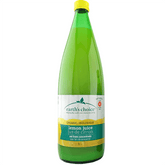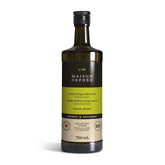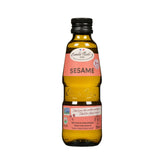What is miso (Bonus: 5 miso recipes)
If you've already bought miso, you may be wondering how to use this ingredient and how to make the most of its virtues. In this article, you'll discover 5 ways to use miso in the kitchen. Our ideas for healthy recipes from the grain box will fuel your creativity and inspire you to add a little more miso to your menu.
And you'll see that miso's uses go far beyond Japanese cuisine.
What is miso?
Miso is a key ingredient in Japanese cuisine. miso is a thick paste made from soybeans, grains (such as rice or barley) and a symbiotic culture called koji which facilitates fermentation. Fermentation of the soybeans gives miso a number of interesting properties, including support for digestive, immune and hormonal health.
There are over a thousand types of miso, all varying in color and flavor. The length of fermentation, the basic crop and the type of grain used are all factors that influence the final taste of the product. The miso has a pronounced salty taste reminiscent of tamari, with a pasty texture reminiscent of tahini. Pale miso has a lighter taste than dark miso, the latter having developed a much more complex flavor as a result of long-term fermentation.
As a general rule, white miso is used in lighter dishes such as vinaigrettes and marinades, while dark miso enhances the flavor of broths and stews.
To familiarize yourself with the use of misoHere are 5 ways to use miso in your recipes.
1era way to use miso: in vinaigretteVinaigrette is the most important element of a salad or dish, giving it character and making the flavors of the food explode.
Miso is a key ingredient to add to a vinaigrette for a dish with complex, delicious and eclectic flavors. A miso vinaigrette is as delicious on a green salad as on an Asian pasta salad, mango salad or grilled vegetable salad. Don't hesitate to drizzle miso vinaigrette over your next dragon bowl.
To make a versatile miso vinaigrette, whisk together all these ingredients.
- ¼ cup ofextra-virgin olive oil
- ¼ cup ofavocado oil
- 1 tablespoontoasted sesame oil
- 2 tbsp. rice vinegar or apple cider vinegar
- 1 tbsp. lemon juice or lime
- 2 tablespoons miso paste
- 1 tablespoon honey or maple syrup
- 1 tsp. toasted sesame seeds
2th way to use miso: as a marinade
Unlike an oil-based vinaigrette, a marinade should be concocted with miso. based on an acid such as vinegar or citrus juice. Acids tenderize meat during marinating and reduce the production of carcinogens formed inside food during cooking.
As this article on safe BBQ cookinga healthy marinade should be acid-based, and contain culinary herbs or berries with antioxidant properties to minimize the harmful effects of cooking on food.
We suggest this recipe for a healthy miso-based marinade. It's delicious on fish and meat, but also on grilled vegetables, tempeh and tofu.
To make the marinade :
- Mix 2 tablespoons of miso in ¼ cup of lemon juice.
- Add 1 tablespoon of honey1 garlic clove and a few Thai basil, shiso or fresh coriander leaves.
- Replace the fresh herbs with 1 tablespoon of turmeric1 tbsp. fresh ginger and 1 tsp. ground pepper for a warming marinade with anti-inflammatory properties.
- Pour the marinade over the food (meat, fish, tofu, tempeh or vegetable). Cover and let stand for a minimum of 20 minutes, preferably 6-12 hours.
3th way to use miso: in broth
Making your own broth allows you to control the quality of the ingredients used, while minimizing food waste. Bones and gristle left over from a piece of meat can be used as the basis for a bone broth, while vegetable peels and trimmings make excellent vegetable broths.
However, all broths need seasoning and salt. That's how miso enhances the flavor of homemade broths.
Make this homemade vegetable broth or this slow-cooker bone broth by adding 5 to 15 ml of dark miso, like the Genmai or Hatcho to enhance the flavor of the final product.
4th way to use miso: as a seasoning
With its distinctly savory notes, miso is the seasoning of choice for many dishes. Any recipe that calls for soy sauce, tamari or salt can be enhanced with miso in place of these ingredients.
What's more, adding miso to vegetables, tofu cubes or pieces of meat enhances not only the flavor but also the nutritional profile of the food.
So the next time you fry onions, beans or green vegetables in the pan, remember to add 1 or 2 teaspoons of miso at the end of cooking.
5th way to use miso: in salted caramel
Salted caramel means miso! With its pronounced salty taste, miso adds unparalleled flavor to this vegan salted caramel recipe. Made from wholesome ingredients, this salted caramel recipe is not only delicious, but healthy too. Add this miso salted caramel to your favorite dessert recipes, including pies, brownies, ice cream, and feel free to drizzle over your homemade popcorn with this exquisite caramel!
To make the miso salted caramel :
- Stir in 200 ml of rice-based vegetable cooking cream into a medium-sized saucepan and turn the heat to medium-low.
- Stir in ½ cup of organic cane sugar and mix vigorously.
- Dilute 1 tablespoon paste of white miso in 50 ml water in a small glass.
- Add the diluted miso to the saucepan and whisk to thoroughly incorporate the miso into the sweet cream. Add ¼ teaspoon of sea salt. Stir vigorously and bring to a boil.
- Remove from heat and serve immediately, or allow to cool to serve cold.
Enjoy your meal!
About the author
Naturopaths of La Boite à Grains
Team of licensed and certified naturopaths (ND) in Gatineau, Outaouais.
Original article written by Véronique Cousineau, Naturopath























2 comments
Bonjour Nicole,
Pour plus de renseignements et recommandations, vous pouvez discuter avec nos conseillers en santé et naturopathes en appelant aux horaires d’ouverture de nos magasins au 819-771-3000 extension 221.
Je viens de découvrir votre site. J’ai lu votre article concernant le miso ainsi que vos recettes. J’ai toujours cru qu’il ne fallait pas cuire le miso en le faisant cuire car il perdait alors toutes ses qualités. On dit qu’il faut le rajouter en fin de cuisson et s’assurer que le plat ne mijote plus. Qu’en pensez-vous ?